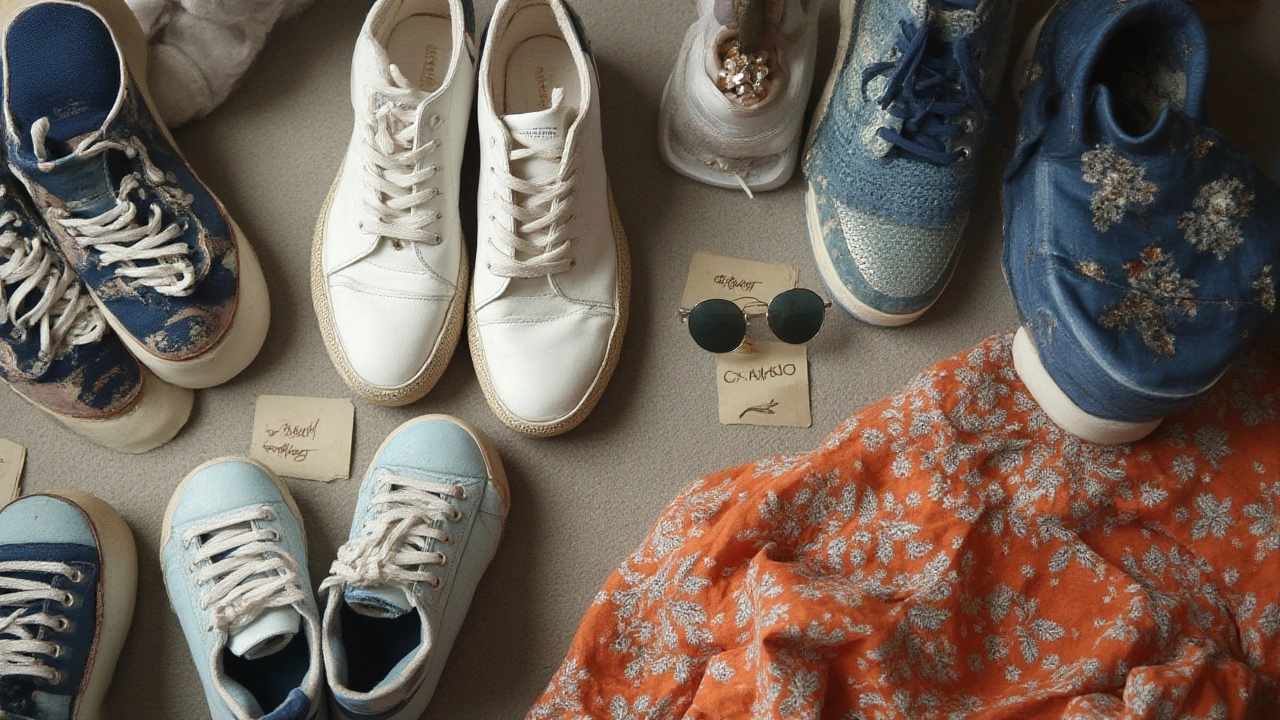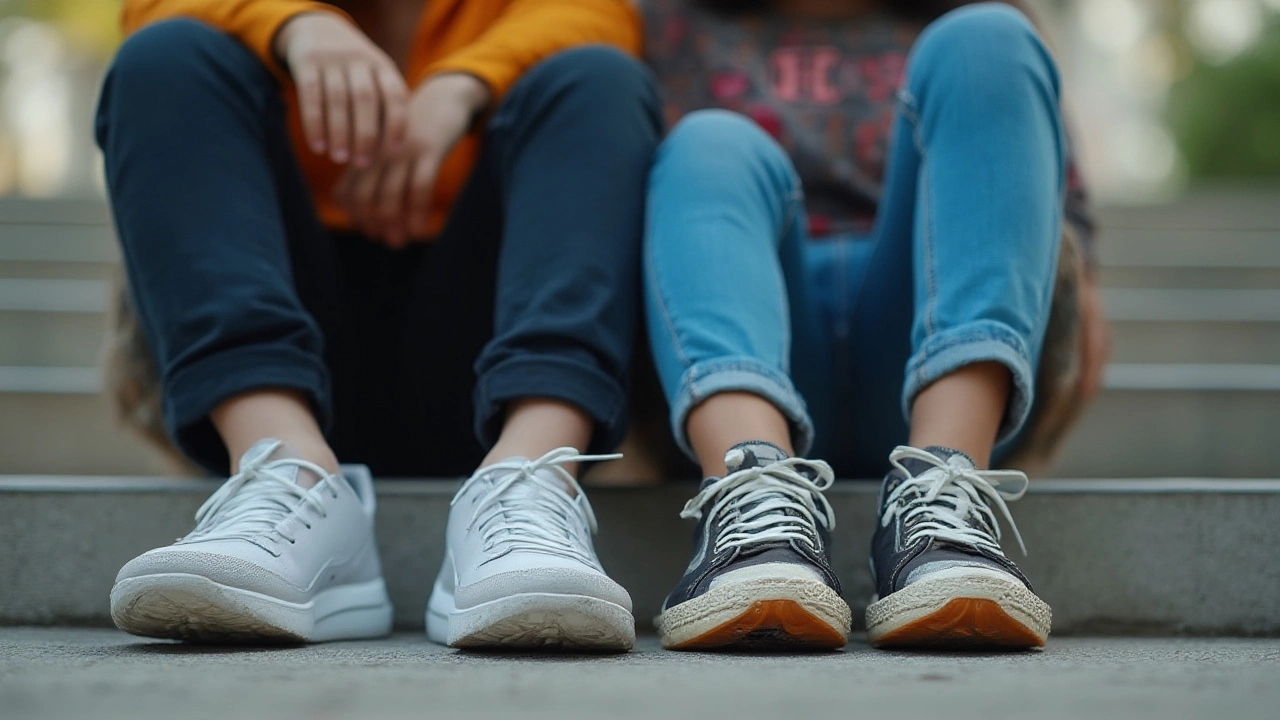Trainers vs Sneakers: Key Differences and Style Tips

You might think trainers and sneakers are just different words for the same comfy shoes, but there’s actually a story behind each name—and a world of subtle differences hiding in plain sight on your shoe rack. Ask a Brit about trainers and you’ll get a completely different answer from someone shopping in Vancouver or New York for fresh sneakers. This topic isn’t just about fashion buzzwords. It grabs at how sport, culture, and industry drew lines in the sand, shaping what we put on our feet—and why we call them what we do. There are curious facts and even little-known trends hidden inside all the ordinary-looking laces and soles at your local mall.
The Origins: Where Trainers and Sneakers Came From
It’s wild to think that the shoes in your gym locker evolved from devices made of canvas and rubber that first hit the scene back in the late 1800s. Early rubber-soled shoes—called "plimsolls"—were invented in Britain for people to play tennis and croquet in. The funny thing is, they were such a quiet step-up from leather soles that factory workers nicknamed them “sneakers,” because you could sneak silently around with them. That word caught on in North America. In Britain, the name “trainers” became popular because, quite simply, the shoes were used for training—both for athletes and everyday folks who liked to stay active. Even major UK brands, like Gola and Dunlop, ran with the “trainer” label.
Fast forward to the 20th century and the brands we all know—Adidas, Nike, Puma, New Balance—started mixing science with sports. Adidas, birthed in Germany, made iconic trainers with specific soles for running, football (or soccer for us Canadians), and other sports. Meanwhile, in America, Converse took that “sneaker” energy and spun it into Chuck Taylors, basketball’s old-school darling. If you pick through shoe ads from the 1970s, it’s trainers for athletics in Europe, sneakers for basketball and streetwear in North America. Even now, you hear the difference in regular conversation: “I’m off to buy new sneakers” sounds urban and American, while “just slipped on my trainers” is pure British morning.
The names are shaped by marketing, yes, but also by the different fashion and sport cultures. In countries like Australia and South Africa, “trainers” wins. In South Asia, “sports shoes” is the catch-all. It shows just how much language and lifestyle mess with our closets. The coolest fact? In 1984, when Nike released the Air Jordan 1, that shoe wasn’t just a sneaker or a trainer—it was the beginning of footwear as pop culture rebellion. But ask a collector today, and odds are they'd slip that one into the sneaker camp.
Time for some numbers. According to Statista, the global athletic footwear market topped $160 billion USD in 2023, with North America owning about 36% of the demand—driven heavily by interest in both trainers and sneakers. Brands sometimes market the same shoe as a sneaker in the US and a trainer in the UK. It’s less about the construction, more about who’s buying and where they're wearing them.

Practical Differences: Construction, Use, and Looks
Okay, so now you know how trainers and sneakers got their names—but what about the physical shoes themselves? If you look closely, there are some telltale signs that set the two apart. Trainers are, in the most classic sense, built for performance. We're talking actual athletic training: running, cross-training, going hard in the gym, organized sports. They’re made with advanced shock-absorbing soles, breathable mesh, extra heel support, or even special lacing for stability. Brands like Nike, Asics, and Adidas pour millions into developing new foam composites and boost materials, making trainers lighter, springier, and safer for every step—even if you’re just heading for bubble tea, not a marathon.
Sneakers, on the other hand, are born more for day-to-day wear and, honestly, for looking good on Instagram feeds. They still look sporty, and plenty use high-quality materials, but they’re crafted for comfort and style. Iconic sneakers—think Nike Air Force 1, Vans Old Skool, or Adidas Superstar—focus on a mix of classic designs, colorways that catch the eye, and collaborations with artists, musicians, or even luxury designers. If you spot wild colors or limited-edition graphics, congratulations, you’re deep in sneaker territory. That doesn’t mean you can’t gym in sneakers—the lines get blurry, and many people do! Still, if you see “lifestyle” or “streetwear” on the label, you’re looking at a sneaker. Trainers are sold with terms like “performance,” “running,” or “cross-training.”
trainers often use heavier tech features: arch support, extra padding, dynamic soles that flex in all the right places. You won’t get those in entry-level sneakers—they’re usually more about the look, less about shock absorption. That said, the trend now—thanks, TikTok and fashion YouTubers—is to mix style and function. Brands release “hybrid” shoes: technically designed as trainers, but loaded with the look of a must-have sneaker. The New Balance 990, for example, has the cushiness of a trainer and the street cred of a sneaker. But in specialist shops, if you ask for a sneaker, you’ll still be shown shoes built for daily wear, not high-performance.
Here’s a quick look at key design stats so you can see what goes into both types (figures for 2024, gathered from product specs):
| Trainers | Sneakers | |
|---|---|---|
| Main purpose | Sports training, running, fitness | Casual/streetwear, fashion |
| Materials | Breathable mesh, performance foam, supportive overlays | Leather, canvas, suede, standard rubber |
| Tech focus | Grip, cushioning, arch stability | Color, branding, limited edition designs |
| Lifespan (average with daily use) | 600-800 km before support breaks down | Varies: 1-3 years, mostly based on style wear |
| Price range (CA$ retail) | $90–$220 | $60–$350 (more for rare collabs) |
| Gender focus | Usually unisex, but tailored fit by sport/gender | Unisex and gendered styles, wider fit options |
So, when people debate trainers vs sneakers, the biggest dividing line—at least for buyers who care—is whether the shoe is meant for a sport, or whether it’s a style and comfort choice. That doesn’t mean you can’t wear trainers with jeans or pair sneakers with athleisure—it just means knowing what you’re walking into, literally.

Making the Right Choice: Fit for Your Life, Your Look
Stuck at a store staring at a wall of shoes? Here’s where things get practical. The big question: what are you really going to use your new shoes for? Chasing your next 10K time? Pounding out burpees in a fitness class? Go for true trainers—look for words like "performance running," "cross-trainer," or "support." Even better, try them on at the end of the day when your feet are naturally a bit swollen; this helps you find the real-life fit, not the too-tight morning version. Serious trainers will often have removable insoles and a fit that locks your heel. If you see terms like "Flyknit," "Boost foam," or "ZoomX," you're seeing trainer tech in action.
If your shoe goals are more about looking cool for brunch, exploring Gastown, or scrolling through TikTok shoe hauls for style inspo, sneakers are made for you. Here, it’s all about vibe. Look for pops of color, designs by indie artists, vintage throwbacks, and fun details. Sneakers rarely come with the technical jargon—if you see a big logo or the shoe is part of a celebrity collab, you've found a sneaker. Pro tip: if you’re wearing them out all day, choose cushioning and arch support, even in a sneaker, to save your knees. No shoe should look good but feel awful.
When it comes to cleaning and care, trainers usually handle more sweat—so wash socks often and use sprays like Crep Protect to keep odors at bay. Sneakers can be trickier if they're suede or leather. Use a toothbrush dipped in baking soda paste for canvas and gentle sprays for leather. Don't toss either type in a hot dryer; let them air dry. Here’s a little trick from sneakerheads in Vancouver: stuff wet shoes with newspaper to help them keep their shape, especially after a soggy walk in Kitsilano.
If you care about sustainability, both sneakers and trainers now come in recycled or eco-friendly versions. Adidas has a line using ocean plastic, while Nike’s “Move to Zero” collection recycles foam and rubber. Check the product tag or online details for the materials list—it really helps shrink your carbon footprint.
Finally, don’t stress if you’re still not sure which label to use. Real talk: nobody’s going to chase you out of a Vancouver coffee shop for saying you like sneakers better than trainers, or vice versa. The names blur more every year, and most people just want shoes that look good and feel better. Trust your feet, your lifestyle, and your taste. That’s one line you should never let marketing cross.